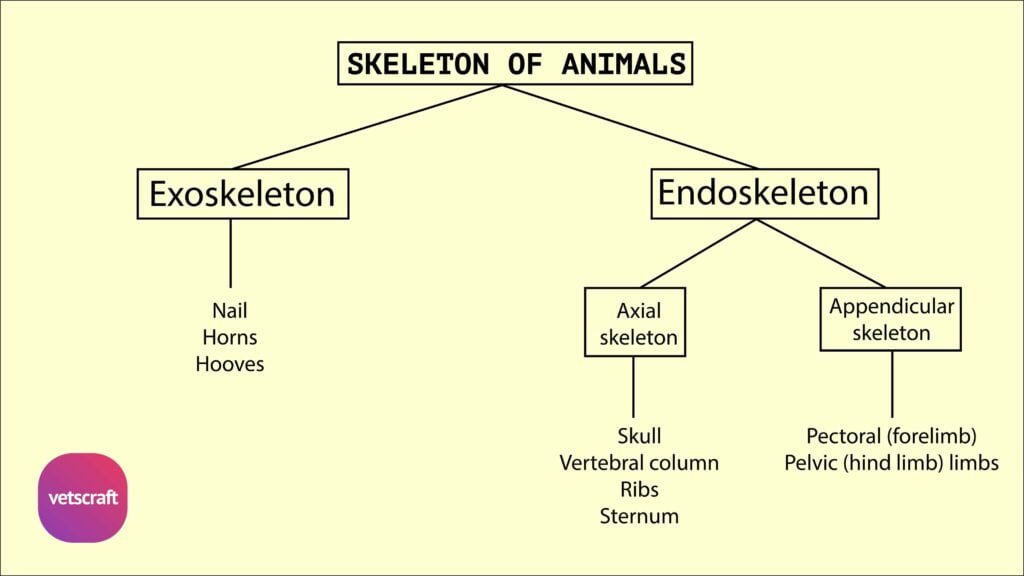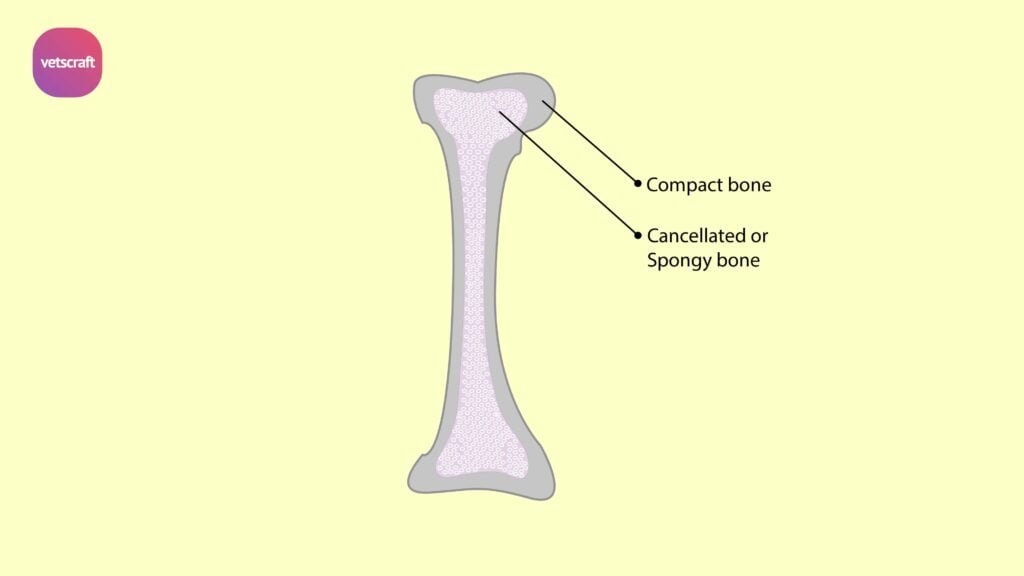TABLE OF CONTENTS
Anatomy of 3rd to 7th Cervical Vertebrae in Animals
The 3rd to 7th cervical vertebrae form the caudal portion of the cervical region in animals and are crucial for supporting the neck, enabling movement, and protecting the spinal cord.
These vertebrae exhibit species-specific variations in shape, articulation, and processes, which reflect the functional adaptations of different animals.
These vertebrae form intervertebral joints and zygapophyseal (facet) joints, which allow neck flexibility and protect the spinal cord.
3rd to 7th Cervical Vertebrae of Ox
The bodies of these vertebrae are long, but the length decreases from the 3rd to the 7th. The ventral surface presents a median ventral spinous process, which is in the form of a sharp ridge, becoming less prominent as it is traced caudally and is tuberculate at its posterior end in the 3rd to 5th vertebrae.
The dorsal surface is flat for the attachment of the dorsal longitudinal ligament. The marked concavity and convexity of the ends of the bodies of the vertebrae are characteristic features of this region.
The facets on the articular processes are very large. A continuous plate of bone connects the anterior and posterior articular processes on the same side of the vertebra.
The root of the transverse process is perforated by the foramen transversarium, except in the 7th. The aggregate of these foramina forms the canalis transversarius for the passage of the vertebral vessels and nerve, hence it is called the nervus transversarius.
Each transverse process divides into upper and lower parts, which are rough for muscular attachment.
The spinous process is in the form of a low, thick rod, which is directed upward and forward. These spines gradually increase in height from the third to the fifth. The spine of the third is often bifid at the summit.
Sixth Cervical Vertebra
The sixth cervical vertebra presents the following distinctive features:
- The body is shorter and wider.
- The lower division of the transverse process is more developed and plate-like, and extends considerably below and behind the level of the body.
- The dorsal spine is longer than that of the fifth. The ventral spine is absent.
Seventh Cervical Vertebra
The following characteristics distinguish the seventh cervical vertebra from the others:
- The body is the shortest of all the cervical vertebrae.
- The transverse process is single and undivided, and the foramen transversarium is absent.
- The spine is very well developed, inclines gently forward, and forms a prominent plate of bone. Hence, this vertebra is also termed the vertebra prominens.
- On either side of the posterior end of the body is a semicircular concave costal (capitular) facet, which, along with a similar one on the anterior aspect of the first dorsal vertebra, forms a cup-shaped capitular cavity for the head of the first rib.
- The ventral spine is absent.
Comparative Anatomy of 3rd to 7th Cervical Vertebrae
The 3rd to 7th cervical vertebrae exhibit notable comparative anatomical variations among domestic animals, reflecting their differing neck functions and locomotion styles.
Sheep and Goat
- The cervical vertebrae of sheep and goats are relatively longer than those of the ox.
- A central ridge separates the anterior articular processes.
- The ventral spines are rudimentary.
Horse
Third, Fourth and Fifth Cervical Vertebrae
- A continuous plate of bone unites the anterior and posterior oblique processes in the fifth vertebra, but this plate extends only three-fourths of the distance forward from the posterior articular process in the fourth vertebra, and only halfway in the third.
- The spines are less developed.
- The articular processes are better developed.
- The transverse processes are bifid showing anterior and posterior division.
Sixth Cervical Vertebra
- The transverse process is trifid; the third part is plate-like and extends back below the body.
Seventh Cervical Vertebra
- The spine is a flattened triangular process and is much smaller than that of the ox.
- The body is larger.
Pig
- The cervical vertebrae are short and wide in pigs.
- The bodies are elliptical in cross-section.
- The ventral spinous process is absent.
- The pedicles are perforated by a foramen in addition to the intervertebral foramen.
- The transverse process is divided into two divisions from the third to the sixth vertebra.
- The spines increase in height from the third to the last, with the last being the tallest.
- Usually, there are two intervertebral foramina on each side of the arch.
Dog
- The third, fourth, and fifth cervical vertebrae: The bodies are relatively longer and compressed dorso-ventrally.
- The sixth cervical vertebra: The lower, plate-like division of the transverse process is extensive and ridged on its medial face.
Rabbit
- The cervical vertebrae are seven in number in rabbits.
Fowl (Third to Fourteenth Cervical Vertebrae)
- The bodies of the cervical vertebrae are rod-like in fowl.
- The anterior extremity of each vertebra is concave from side to side and convex from above downward, while the posterior extremity presents the reverse condition—i.e., convex from side to side and concave from above downward—which allows a great degree of movement in this region.
- The transverse processes arise from below the anterior articular process and are prolonged behind by spicules of bone—the styloid processes. These represent cervical ribs.
- The foramen transversarium is present. No facets for the head of the first rib are present on the body of the fourteenth cervical vertebra.

